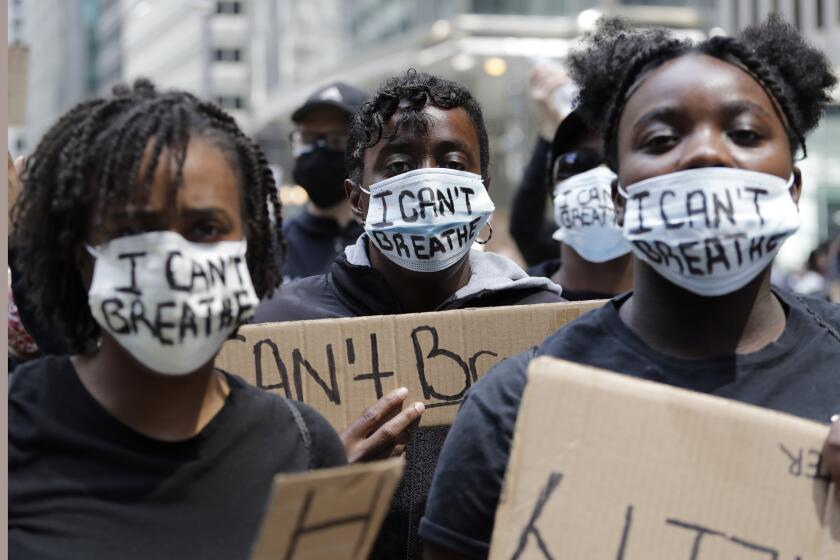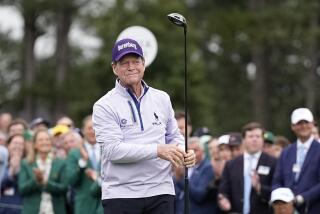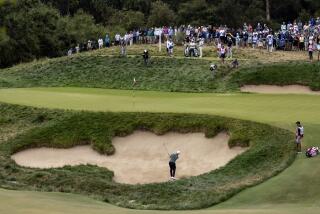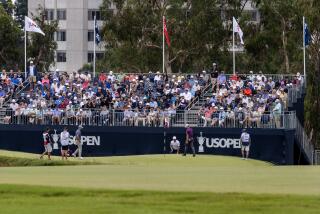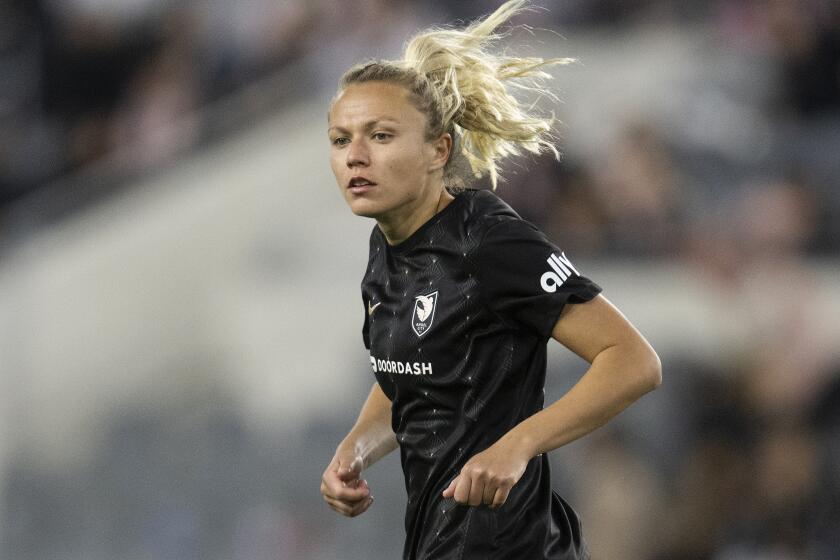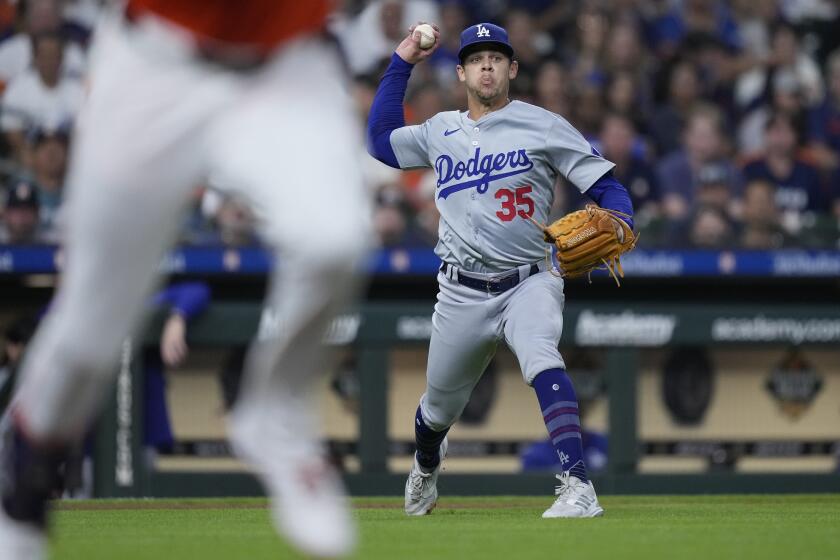For the PGA Tour, a return from coronavirus crisis creates opportunity and anxiety
It’s the details that have golf worried.
What happens when Rory McIlroy ponders a delicate wedge from thick rough? Or Dustin Johnson parses a treacherous, downhill putt?
Professional players normally sidle up to their caddies in such moments, whispering, deliberating over strategy — the sort of proximity that is frowned upon during a pandemic.
“Maybe when you’re in the fairway or at a par 3 looking at the yardage book and talking about the shot … you’ve got to make sure you’re doing it separately and talking at a safe distance,” Rickie Fowler said. “Maybe I’ll keep a club in my hand and hold my caddie at arm’s length or something.”
This game might seem perfect for the coronavirus outbreak. Open space and fresh air, plus massive clubhouses that afford room for social distancing, will allow the PGA Tour to resume play this week.
But even as golf gets a jump on team sports such as baseball, basketball and hockey — none of which will resume before July, if at all in the case of MLB — players must learn, and unlearn, some basic behaviors, including the natural urge to approach caddies for pre-shot advice.
Sunday is when Tiger Woods made golf history, but Saturday is when he won the 2019 Masters and reestablished himself as golf’s king.
Those caddies will be expected to wipe down every bunker rake or flagstick they touch. Tournament directors have talked about handing out tees in individual baggies. Players might have to pull their own clubs from their bags.
Tour executive Tyler Dennis said: “We have taken the time to think through a day in the competitive life of a player and caddie and how we need to make some small adjustments.”
Seven of the world’s top 10 golfers have committed to the Charles Schwab Challenge at Fort Worth’s Colonial Country Club, the first tournament since the Tour was suspended in mid-March. The field, which also includes Jason Day, Jordan Spieth and Phil Mickelson, has betrayed few reservations when it comes to new rules.
“I’ve been wearing masks when we go to the grocery store and stuff like that,” Fowler said. “Totally ready to show up on the course with one if needed.”
Should facial coverings be required, they would represent only one of the visible changes at Colonial. No fans will be allowed on the property and some of the sport’s top international names have begged off because traveling to the U.S. would require two weeks’ quarantine.
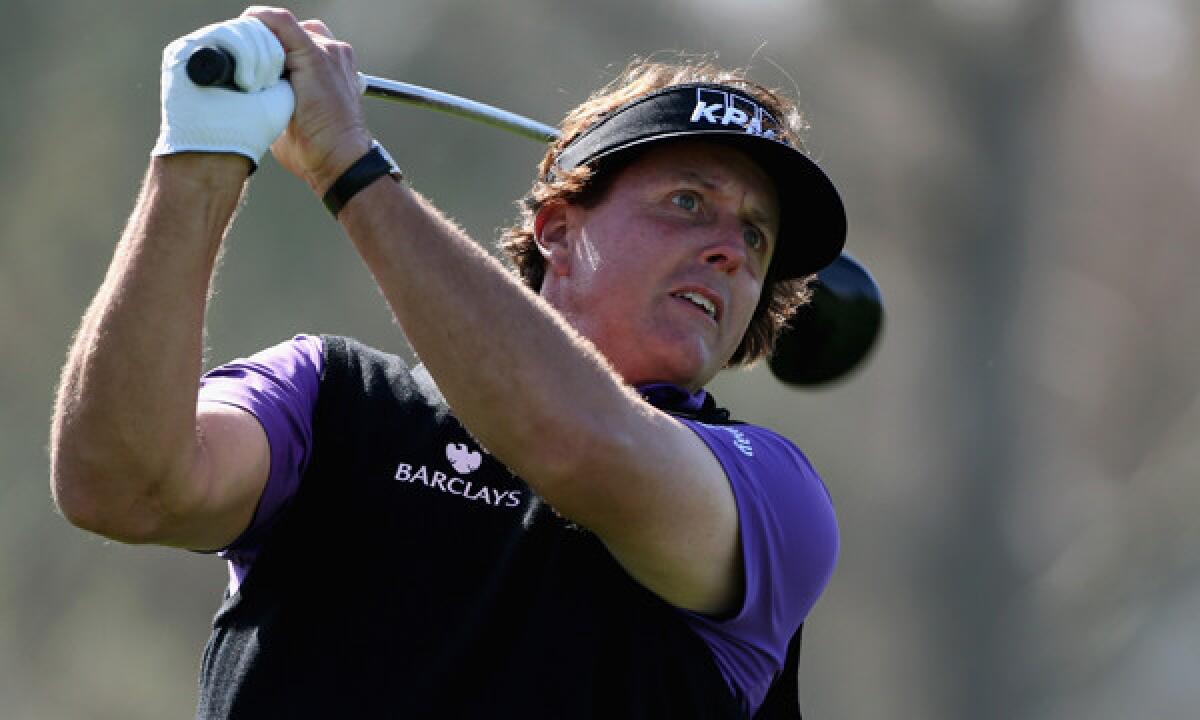
Tour executives have spent months consulting with public health experts, searching for ways to make the tournament safe for those who do attend. Their plan, a work in progress, might serve as a test case for the restart of the NBA and NHL.
“We view this as a unique opportunity for the PGA Tour, our players and our sport in general, to help lead the way,” said Andy Pazder, the chief tournaments and competitions officer. “We take that responsibility to heart.”
Players and caddies have been tested for COVID-19 in advance and, upon arriving in Texas, will take another test that will be sent to a nearby laboratory for expedited analysis. As the tournament begins, they must complete a health questionnaire and have their temperatures checked before each round. Anyone running a fever will be retested.
The main concern of black people right now isn’t whether they’re standing three or six feet apart, but whether their sons, husbands, brothers and fathers will be murdered by cops.
But there is a gap in the process.
Though a positive result means immediate quarantine, players will be allowed to compete while awaiting news from the lab, which could take 24 to 36 hours. And the field accounts for only a fraction of the tournament population, which will number in the hundreds even without crowds. “So many people think of just the golfer and the caddie,” said Steve Wilmot, tournament director for the RBC Heritage scheduled for late June. “But there are a lot of moving parts.”
The Heritage, which normally enlists 1,200 volunteers, will make do with a skeleton crew of 400 or 500. That includes walking scorers to follow each group and marshals to help find tee shots that land in deep rough. The ShotLink system, which keeps statistics on every shot, usually requires about 350 spotters throughout the course.
“I’ve been wearing masks when we go to the grocery store and stuff like that. Totally ready to show up on the course with one if needed.”
— Ricky Fowler
This contingent raises an issue. “Ninety-nine percent of our volunteers are retired, so they’re in that age group of concern,” Wilmot said, referring to a high-risk category for the coronavirus. “They’ll be doing the proper things and wearing their masks.”
Instead of asking volunteers to drive evacuation vans — which would pack players shoulder to shoulder — tournaments will have clusters of open-air golf carts placed around the course should a storm break out.
If the plan works, golf has an opportunity to boost its audience in a sports-starved culture. For NASCAR, which returned to racing May 17, the absence of alternatives translated to a 38% increase in television viewership. “This is an opportunity because it’s safer and there is an appreciation for being outdoors,” golf writer Geoff Shackelford said, “and the sport can take advantage of that.”
But, even with all that open space, golf will need to be cautious and creative. As Wilmot said: “There is no playbook for this.”
Players seem to understand the stakes.
“Obviously everyone is going to be watching what we’re doing,” Johnson said, “so I think it’s very important for us to do it all correctly.”
More to Read
Go beyond the scoreboard
Get the latest on L.A.'s teams in the daily Sports Report newsletter.
You may occasionally receive promotional content from the Los Angeles Times.


